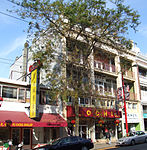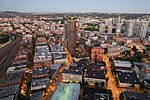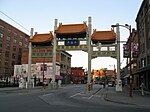Insite
Insite is the first legal supervised drug injection site in North America, located at 139 East Hastings Street, in the Downtown Eastside (DTES) neighbourhood of Vancouver, British Columbia. The DTES had 4700 chronic drug users in 2000 and has been considered to be the centre of an "injection drug epidemic". The site provides a supervised and health-focused location for injection drug use, primarily heroin. The clinic does not supply any drugs. Medical staff are present to provide addiction treatment, mental health assistance, and first aid in the event of an overdose or wound. In 2017, the site recorded 175,464 visits (an average of 480 injection room visits per day) by 7,301 unique users; 2,151 overdoses occurred with no fatalities, due to intervention by medical staff. The site also offers a free checking service so clients can check their substances for fentanyl and carfentanil. Health Canada has provided $500,000 per year to operate the site, and the BC Ministry of Health contributed $1,200,000 to renovate the site and cover operating costs. Insite also serves as a resource for those seeking to use a harm reduction approach for people who inject drugs around the world. In recent months and years, delegations from a number of countries are on record touring the facility, including various U.S. states, Colombia and Brazil. 95% of drug users who use Insite also inject on the street according to a British Columbia health official.
Excerpt from the Wikipedia article Insite (License: CC BY-SA 3.0, Authors).Insite
East Hastings Street, Vancouver
Geographical coordinates (GPS) Address Nearby Places Show on map
Geographical coordinates (GPS)
| Latitude | Longitude |
|---|---|
| N 49.281111111111 ° | E -123.10111111111 ° |
Address
East Hastings Street 160
V6A Vancouver
British Columbia, Canada
Open on Google Maps







